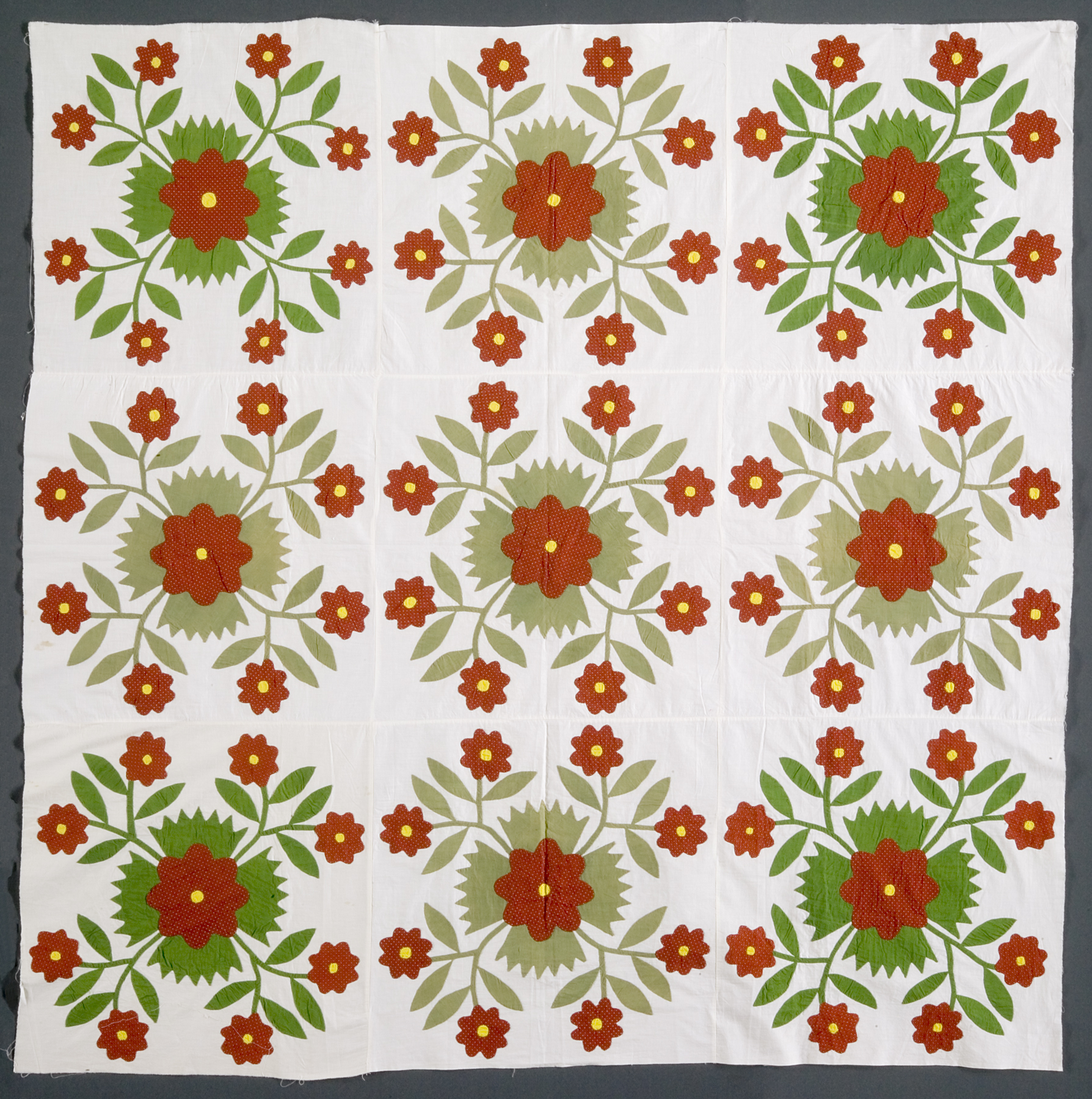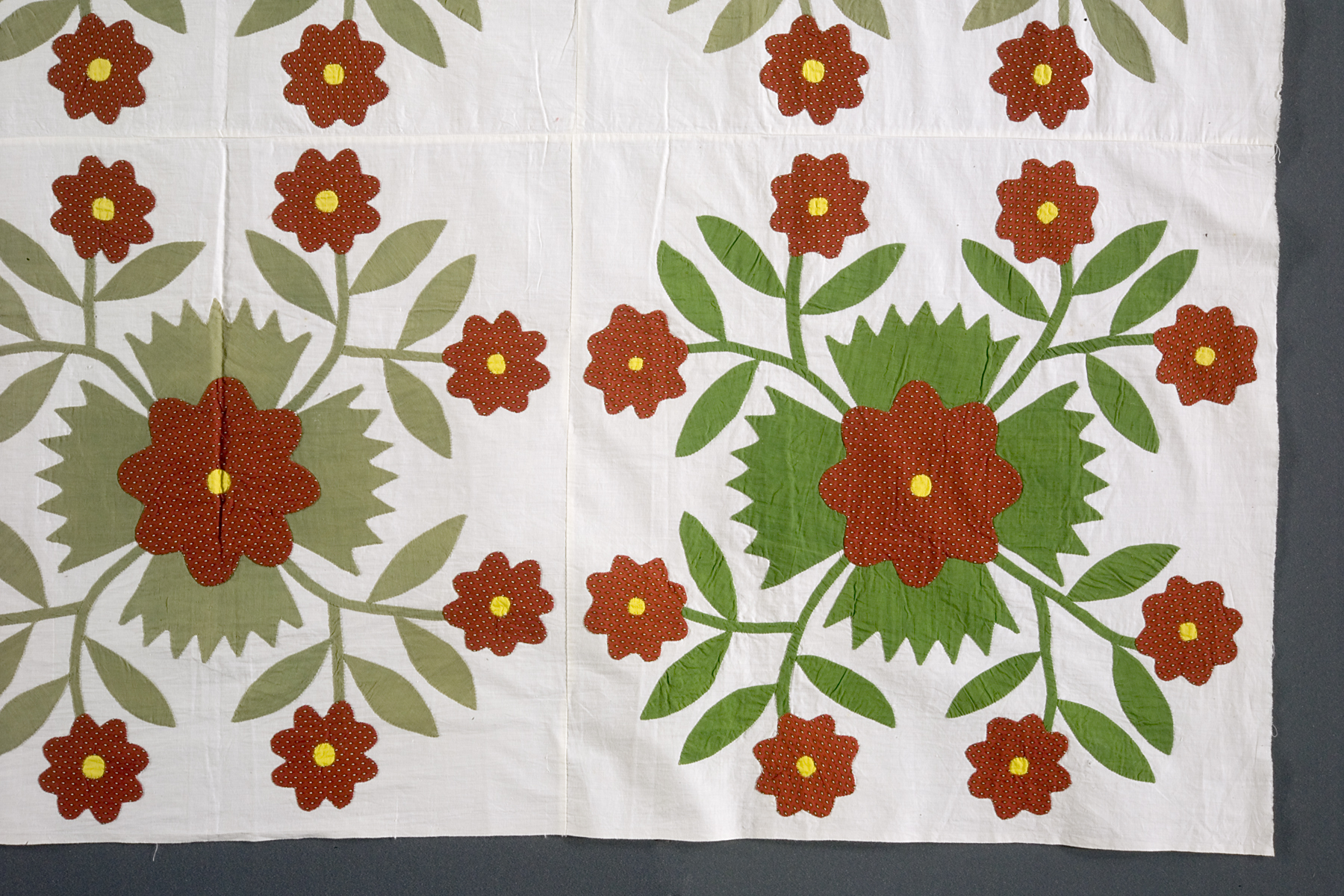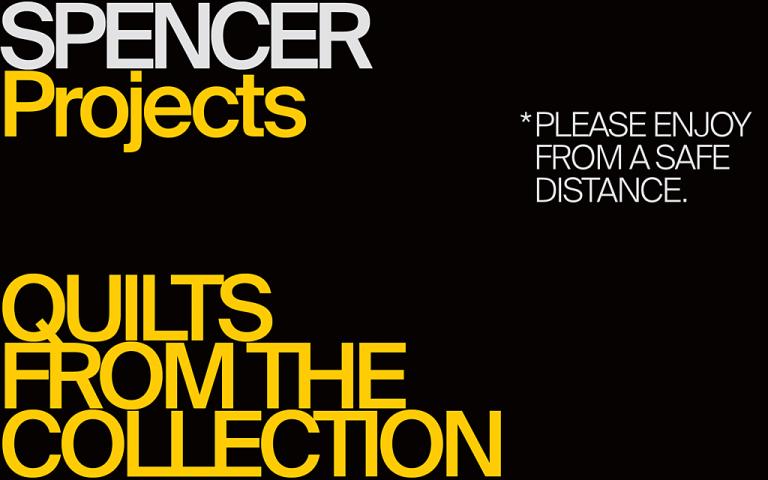California Rose quilt top, Elizabeth Kunkel
Artwork Overview
Elizabeth Kunkel, artist
died 1888
California Rose quilt top,
circa 1840–1887
Where object was made: United States
Material/technique: cotton; appliqué
Dimensions:
Object Length/Width (Length x Width): 66 1/2 x 67 in
Object Length/Width (Length x Width): 170.18 x 168.91 cm
Object Length/Width (Length x Width): 66 1/2 x 67 in
Object Length/Width (Length x Width): 170.18 x 168.91 cm
Credit line: Gift of Elizabeth A. Hazlett in memory of Emma Kunkel
Accession number: 1982.0060
Not on display
If you wish to reproduce this image, please submit an image request




